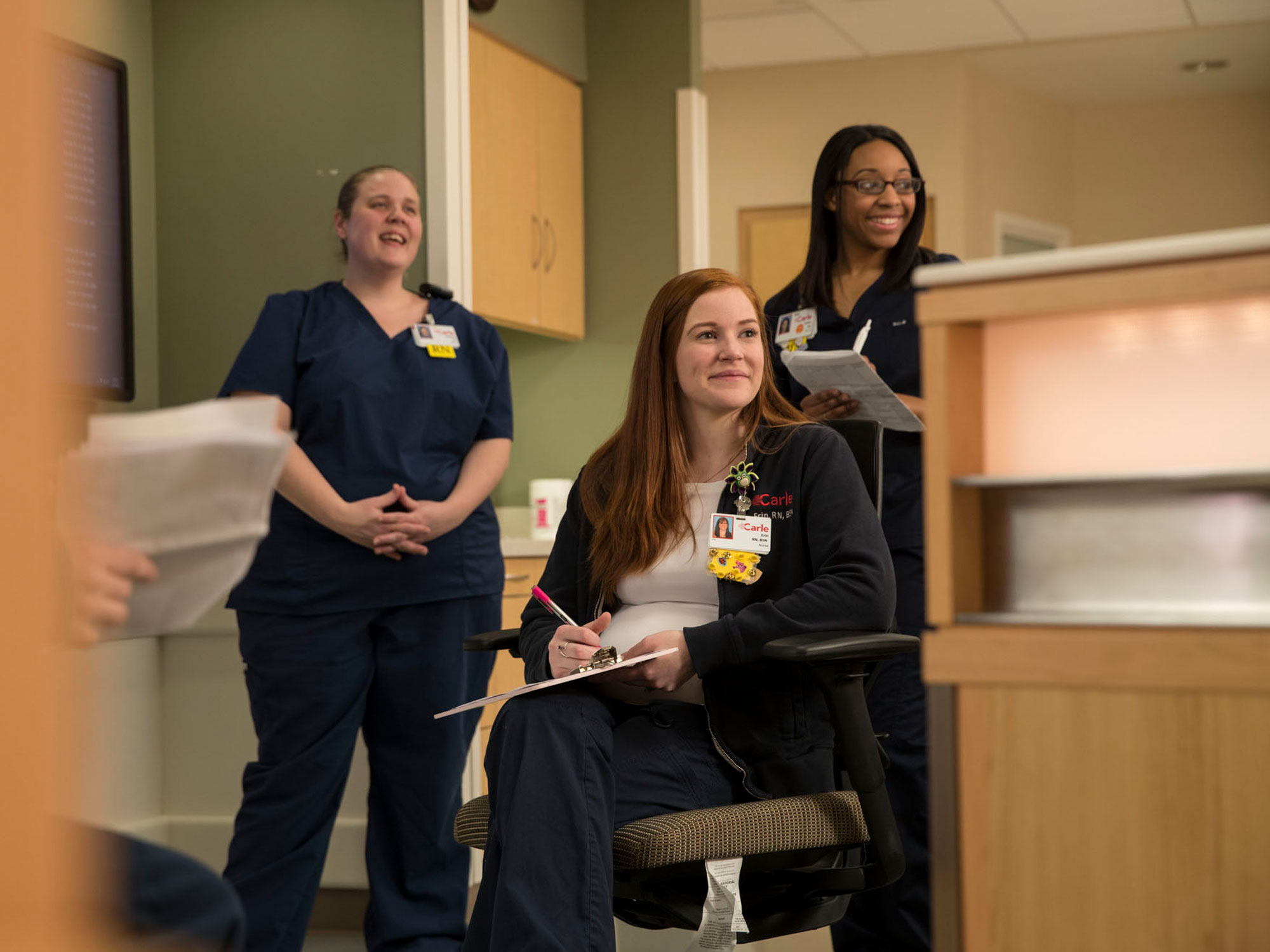Jo Ann Creek BSN-RN, CMSRN, used to go to both the inpatient and ambulatory best practice meetings to keep up with system policies and guidelines. As a Radiology nurse leader she took portions of each meeting back to her teams to apply to their patients.
“I was attending both councils because there were so many pieces that applied to us but not completely. I was getting information from both sides that fit my area, which took more time away from my patient work,” she said.
In 2019 the Procedural Practice Council was created to help the many areas that experience this strain.
Creek and Kelsey Staley, BSN-RN, MBA, are co-chairs of the group designed to bring together representation from across the system from areas that perform procedures to help streamline policies and processes.
“The Procedural Practice Council is a much-needed opportunity to make connections between the Ambulatory and Inpatient procedural areas,” Staley said. “As Carle continues to expand, it is exciting to see and be a part of the diverse departments collaborating as a team to provide high-quality care to our community.”
There are currently 32 participants who join monthly council meetings where the groups hear from speakers and contribute to addressing areas of concern. Departments such as the Emergency Department, Cancer Center, Critical Care, Surgery Center, HVI procedures, Operating Room, Inpatient Pharmacy, Quality and others are represented.
While the participation set is diverse, the co-chairs hope to transition to a more shared-governance model in the coming year.
“We want to try to move away from the leadership representation in the meetings and more to staff representation,” Creek said. “We’d like to see 80 percent staff attendance to create a more shared governance model to allow those who are on the front lines the ability to help create solutions and drive change in their areas.”
The group offers many opportunities to find innovative solutions for departments that have both acute and ambulatory considerations.
“There is a lot of processes done inconsistently throughout the system and this is one way to help standardize things and continually evaluate so we can always use best-practices,” Creek said. “This council will help increase the quality of care provided to our patients.”
The meeting agenda is always evolving. The council has plans to work with Education to review applicable policies and process and streamline procedures for more synergies. They’d also like to broaden the scope to make sure everyone who should be part of the conversation is represented.
While they’ll have to pace themselves, the Procedural Practice Council always has the goal of improving the quality of care in mind.
